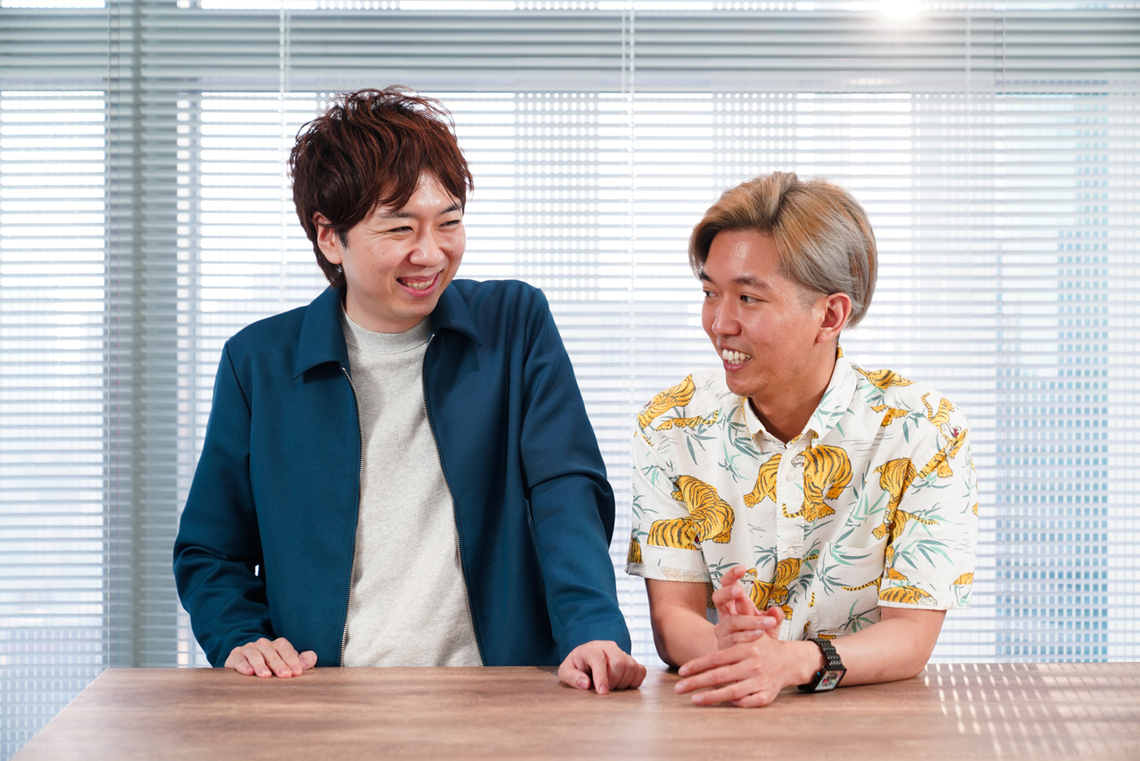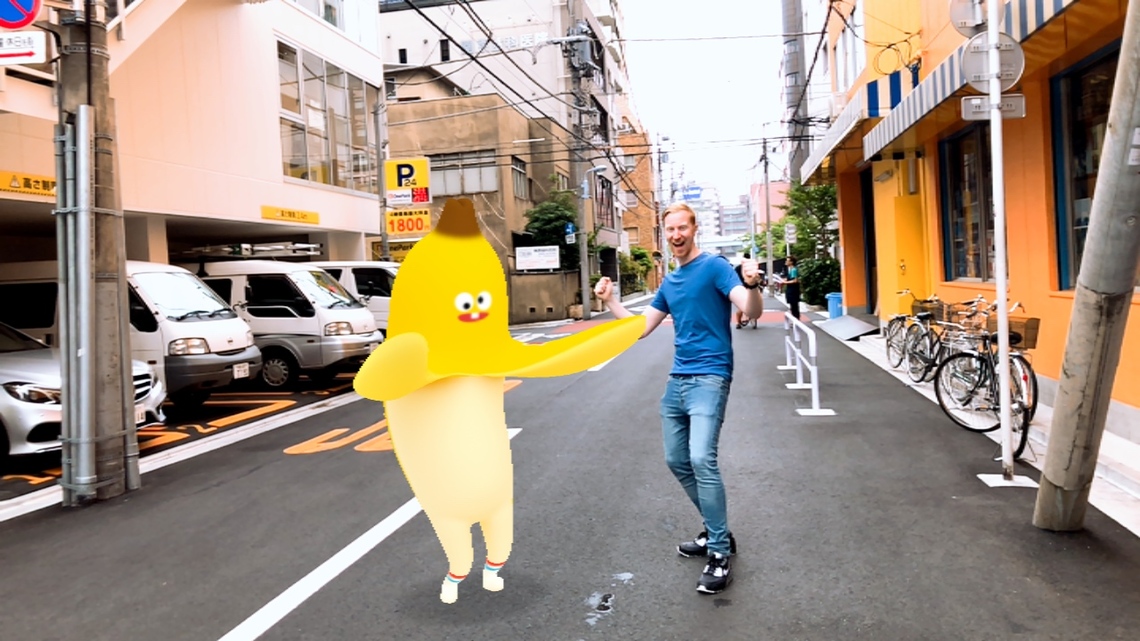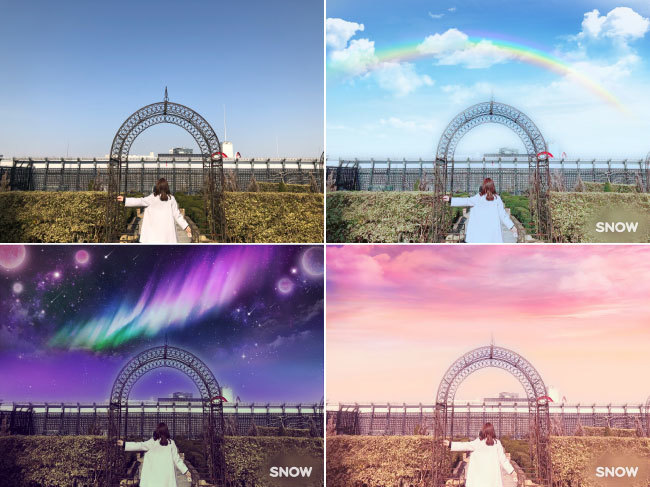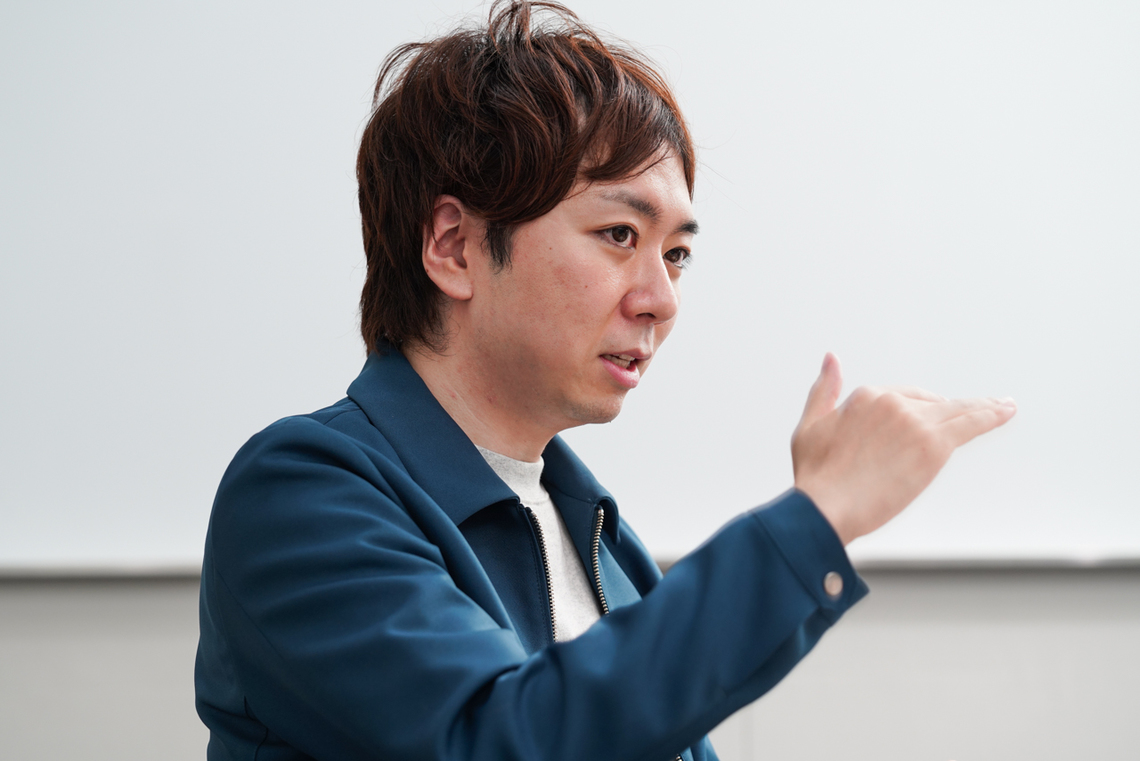Last October, Akira Amano of Dentsu Inc. Media Innovation Lab published his book "The Psychology of Sharing: Seven Perspectives for Understanding the Information Environment of SNS" (published by Sendenkaigi).
To delve deeper into the discussions presented in the book, we've held dialogues with three guests so far. For this final installment of the series, we welcome Ji-an Choi, Head of Japan at SNOW Corporation, the company behind the popular app "SNOW." Together, we'll explore how the "embellishment" culture is influencing communication using photos and videos, and ultimately, what new winds it might bring to advertising—examining both its current state and future potential.

From left: Akira Amano (Dentsu Inc. Media Innovation Lab), Ji-an Choi (Head of Japan, SNOW Corporation)
What defines Japan's "embellishment" culture!?
Amano: Let's first define the keyword for this discussion: "moriru." Originally, it literally meant "to style one's hair," reflecting the prominent "gal culture" of the past where it signified "making one's appearance flashy." Now, however, it has evolved to generally refer to making one's appearance look better.
Saying "You look great!" about a photo taken from a flattering angle perfectly captures this meaning. I believe SNOW has been a major driver of this usage of "moriru."
It pioneered an era where anyone can easily "盛る" their selfies, and by extension, their "digital self." As a result, I believe it elevated "盛る" photos and videos into a full-fledged culture among young people. How do you perceive this trend, Mr. Choi?
Choi: SNOW launched in Korea in September 2015 and went global in November. In Japan, it reached #1 in the overall free app rankings in about six months, and within a year, it surpassed 80 million downloads worldwide. I believe SNOW's arrival popularized the concept of "enhancing" photos and videos.
While "enhancement" services existed before, I believe SNOW gained such widespread support primarily due to its high-precision facial recognition technology. It offers fast response times during shooting, enabling instant enhancement. Plus, the wide variety of stamps available is a big factor.
Amano: I believe that popular web and app services, while certainly needing excellent functionality, also possess elements that influence users' values, behaviors, and ultimately, culture itself.
For example, Google gave us the verb "to Google," and Twitter popularized "tweeting." In that sense, SNOW has popularized "enhancing" as a cultural practice.
You could even say there's a difference in mentality toward digital communication in general between young users accustomed to enhancing their photos and those who aren't.
Choi: That's right. I also feel that the ideal face people aspire to is subtly different by country. Korean women aspire to a beautiful face with long, straight hair and sharp features, while in Japan, a slightly rounder, cute face is more popular. So SNOW pays very close attention to tailoring content and localization for Japan and Korea.
Amano: In your book, you mentioned the distinction between Snapchat, which offers features geared toward Western-style enhanced looks, and SNOW, which offers features geared toward Asian-style enhanced looks. But you've also grasped the finer nuances within that, like the differences between Korea and Japan, right?
Choi: Japanese users also highly value being "funny" or "entertaining." Like making funny faces. The cuter someone is, the more they might make funny faces, right?
Amano: It's true, many people love filters that make their faces look a bit strange! I suspect this relates to cultural aspects like hiding shyness or subtly downplaying oneself.
Also, I find it interesting that lately there are videos that change not just faces but voices too. Users who use these seem to enjoy becoming something different from their real selves, expressing things they normally couldn't do or say.
It seems like there's a sense of playfully extending oneself through "enhancement" technology lurking there.
By the way, what's the gender ratio among SNOW users?
Choi: It's three men to seven women. You might be surprised by the high number of men, but among teens and young men in their 20s today, a more neutral, cute-looking face is popular, and many aspire to have that kind of look. So they have no resistance to enhancing their faces, and it's become completely normal for them to constantly post selfies on social media as a form of self-expression.
Amano: So the culture of enhancing selfies and sharing them really stems from the younger generation!
Advertising Strategies for the "Enhanced" Era
Amano: I think a new topic in recent years is how corporate communication has started overlapping with these shared spaces where people use apps to enhance their photos.
For example, features like video filters that "overlay a brand character mask on your face" have now become commonplace. I'm paying close attention to these new touchpoints between brands and users. I believe this represents an update specific to the visual communication era for "usable ads," like LINE stickers. What kind of initiatives is SNOW implementing?
Choi: Traditionally, advertising involved companies unilaterally pushing information, essentially saying, "Here, take a look." But recently, consumer literacy regarding advertising has become incredibly high.
In the SNS era, I believe the most persuasive way for brands and products to spread is when users understand them and then express themselves in their own way, becoming the media themselves. Word-of-mouth and virality have always existed, but SNS emerged as a convenient tool for this, accelerating the speed and immersiveness of viral spread.
The most common request we get from companies choosing SNOW as an advertising platform is to create custom brand stamps. They want users to interact with stamps featuring their logos, characters, or products to foster communication. We've partnered with dozens of companies this way.
However, when using SNOW as a platform, I don't think you can approach it the same way as traditional advertising. SNOW isn't just something you watch; it's about creating your own original expression with stickers and sharing it with everyone.
For us, the fundamental premise is not about being seen, but about getting people to actively participate. This presents a significant challenge: we must create something genuinely engaging while still conveying the brand or product image.
Amano: Word-of-mouth has always existed, if you think about it. The desire to share something truly good or something you love is universal. What's important now is how it spreads: whether it's communicated one-to-one as a message or one-to-many socially. The ways it spreads have diversified, and sharing happens more frequently in smaller units.
That's precisely why creating those opportunities is so crucial. In other words, it means companies and brands have more chances to build new kinds of relationships with consumers.
Choi: That's right. Many companies use SNOW, and user reactions are positive—a lot of people are satisfied.
Toward an Era of "Enhancing Spaces" with AR
Amano: This field sees rapid technological advancement, doesn't it? What are your future goals?
Choi: Recently, SNOW added outlinks. This allows photos taken in SNOW to be sent directly to a company's branding or campaign pages. By reducing the hassle of shooting → saving → posting, conversion rates increase for companies, and users find it easier to participate in campaigns.
Amano: Lowering the barrier to communication is crucial. Users tend to drop off quickly if things get a bit cumbersome... especially smartphone users. I think reducing the number of steps in service design will become even more important going forward.
Choi: Also, the biggest update this year is the introduction of AR stamps. When viewed through SNOW's rear camera, bananas appear in an otherwise empty space. If someone is there, you can create playful videos where it looks like they're looking at the banana. Going forward, we want to use SNOW to capture not just the front camera world, but the rear camera world too.

AR Sticker Image
Amano: AR stamps are fun! What kind of enjoyment or benefits does this feature offer users?
Choi: It might be something close to VR, or perhaps it's about enhancing the space. For example, a dad filming a scene where his child is playing with an AR character. Or making memorable photos look even better.

Top left: Original image; Others: AR stamp images ("Sky Filter" that automatically recognizes the sky and transforms the scenery)
Amano: I've seen data showing Japanese users actually use their smartphone's front camera less often and favor the rear camera more. Keeping that in mind, I feel this kind of feature has tremendous appeal.
In my book, I also pointed out the trend that cameras will expand from being tools for "taking" to tools for "seeing."
While cameras are generally thought of as tools for "taking pictures," AR's defining characteristic is the ability to overlay information onto the real world. This means cameras will increasingly be used for creating rich AR experiences, signifying a shift where cameras become tools for "seeing."
While SNOW has been perceived as an app for taking selfies with the front camera, I feel this represents a brilliant pivot that aligns perfectly with this emerging trend.
Finally, could you share your outlook regarding solving corporate challenges?
Choi: Depending on the idea, I believe the range of products and brands that can be expressed will expand significantly. For example, AR stamps can place virtual products in empty spaces. Overseas, there are services where you can make luxury cars appear via AR and take photos that make you look like the car's owner. I think it will likely start with simple applications like that.
Additionally, we're currently developing full-body recognition technology. Using this, users could try on new items from popular brands within SNOW. Previously, finding and trying on clothes required going to a store, which took significant time and effort. This technology makes it instantaneous. I see this as a new approach to brand communication.
Amano: Expanding the scale of communication between companies and users at the experiential level through the power of services—that's definitely a trend.
Choi: So, I believe there are many possibilities. With AR, the challenge going forward is how to utilize it and what kinds of expressions can be created. If we continue to evolve the technology, the possibilities will only keep expanding.
Amano: Throughout this discussion, it was very impressive to see how SNOW, starting from its well-known point of making selfies look stylish, has the potential to fundamentally update the concept of enhancement itself.
I believe that going beyond just making oneself look good—creating fun for the occasion or enlivening the space—will be a key requirement for services that gain support going forward.
And I sensed there's still plenty of room for brands to leverage this to build good communication and relationships. As a SNOW user myself, I'm really looking forward to what comes next. Thank you for this valuable opportunity today!
Book now on sale! Details here.













